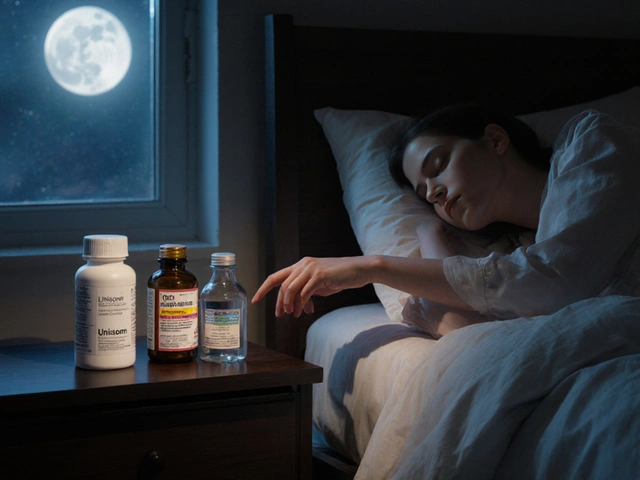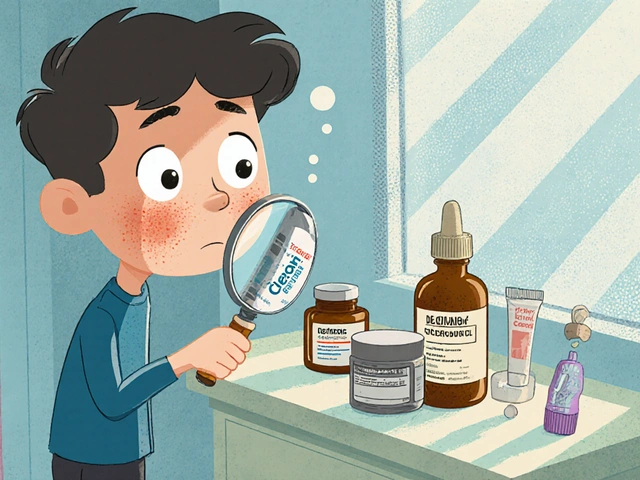Steroid Cream: What It Is and When You Need It
If your skin is red, itchy, or inflamed, a steroid cream might be the quick fix you’re looking for. These creams contain a low‑dose version of the steroids doctors use in pills, but they stay on the surface where you need them. That means they can calm down flare‑ups without the whole‑body side effects of oral steroids.
Most people hear the word “steroid” and think of muscle‑building pills, but topical steroids are a completely different tool. They’re designed to shrink swelling, calm itching, and help skin heal faster. You’ll see them listed on labels as hydrocortisone, betamethasone, clobetasol, and a few others. The strength ranges from mild (1%) to very strong (0.05% clobetasol). Which one you pick depends on the problem and where it shows up on your body.
How Steroid Creams Work
When you rub a steroid cream onto your skin, the active ingredient penetrates the outer layer and tells immune cells to back off. In plain terms, it tells your body "the inflammation isn’t a big deal right now". This reduces redness, swelling, and the urge to scratch. Because the medicine stays where you apply it, you usually need a smaller amount than you would with an oral drug.
The skin on your face and groin area is thinner, so doctors often recommend a milder cream there. For stubborn spots on elbows, knees, or scalp, a stronger formula might be needed. The key is to match the cream’s potency to the severity of the skin issue.
Safe Use and Choosing the Right Product
Even though these creams are safe for most people, they’re not a free‑for‑all. Overusing a strong steroid can thin the skin, cause stretch marks, or even lead to a mild hormonal effect. To avoid that, follow these practical tips:
- Start low. If a milder cream clears up the rash, you don’t need to jump to a stronger one.
- Follow the doctor’s timeline. Most prescriptions say “apply twice daily for a week, then taper”. Stick to it.
- Don’t use on broken skin. If you have open cuts or infections, the cream can be absorbed too quickly.
- Watch for side effects. If you see thinning skin, new bruises, or a rash that gets worse, stop and call a healthcare professional.
- Store properly. Keep the tube tightly closed and away from heat to preserve potency.
When you shop for an over‑the‑counter option, look for a label that says "hydrocortisone 1%" – that’s the mildest and safest for everyday itching or insect bites. For prescription‑only strength, you’ll need a doctor’s note, and that’s a good sign you have a more serious condition like eczema or psoriasis.
One common question is whether you can use steroid cream on kids. The answer is yes, but only under doctor guidance and usually at the lowest strength. Children’s skin is extra sensitive, so a short course is usually enough.
Finally, remember that steroid creams treat the symptom, not the cause. If you notice that the rash keeps coming back, talk to your doctor about underlying triggers – allergies, stress, or even a fungal infection that needs a different treatment.
Bottom line: steroid creams are a handy tool for calming irritated skin fast, but they work best when you pick the right strength, use them for the recommended time, and keep an eye on how your skin reacts. Use them wisely and you’ll get relief without the hassle of more invasive medicines.
Betamethasone for Shingles: Does it Work and Is It Safe?
Thinking about using betamethasone for shingles? Learn if it's safe, how it works, and what experts say about treating shingles and postherpetic neuralgia.





